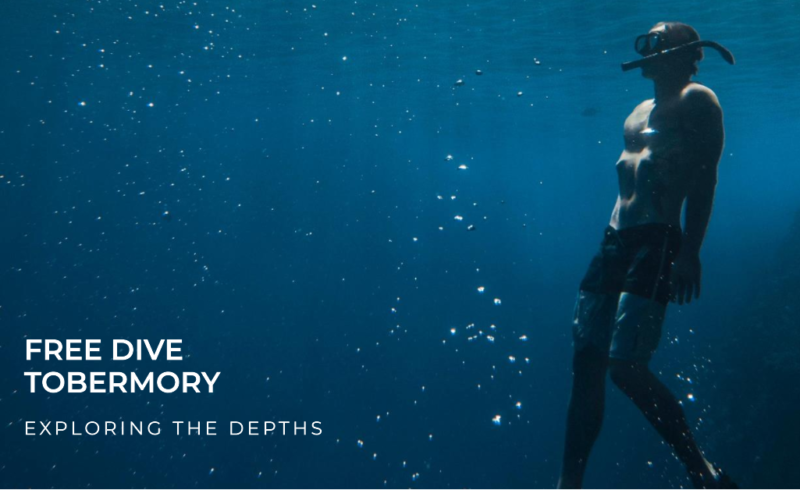
A. Overview of Free Diving Tobermory
Tobermory, a small yet captivating harbor village located on the Bruce Peninsula in Ontario, Canada, is well-known for its clear waters, vibrant marine life, and historic shipwrecks. Free diving enthusiasts are drawn to Tobermory’s underwater treasures, making it a must-visit destination for anyone looking to explore the depths without the constraints of scuba equipment.
B. Importance of Tobermory for Free Divers
Tobermory offers a unique opportunity for free divers to challenge their skills and experience the wonder of underwater exploration. With numerous dive sites, a rich history, and a supportive free diving community, Tobermory has become a hub for those seeking adventure beneath the surface.
A. Development of Tobermory
Established in the 19th century, Tobermory began as a bustling port for shipping and fishing industries. Over time, the area developed into a popular tourist destination, especially for divers interested in the numerous shipwrecks that have accumulated in its waters.
B. Shipwreck History
Many ships have met their fate in the treacherous waters surrounding Tobermory. The region’s unpredictable weather, strong currents, and rocky shores have led to numerous shipwrecks over the years, earning Tobermory its reputation as Canada’s shipwreck capital. The well-preserved wrecks provide a fascinating glimpse into the maritime history and serve as a major attraction for free divers.
A. What is Free Diving?
Free diving, also known as breath-hold diving, is a form of underwater exploration where divers rely solely on their ability to hold their breath rather than using scuba equipment. With practice, free divers can reach impressive depths, offering a more intimate connection with the underwater world.
B. Benefits of Free Diving
Free diving offers several benefits, such as increased physical fitness, mental focus, and a unique sense of freedom. The sport encourages mindfulness, discipline, and a strong connection with nature, providing a truly transformative experience for those who embrace it.
A. Fathom Five National Marine Park
Fathom Five National Marine Park, Canada’s first national marine conservation area, is home to 22 shipwrecks and a variety of underwater geological formations. The park’s crystal-clear waters and diverse marine life make it an ideal spot for free divers to explore.
B. The Grotto
The Grotto is a natural sea cave located in Bruce Peninsula National Park, offering a unique free diving experience. With its turquoise waters, underwater tunnels, and stunning rock formations, The Grotto is a must-visit site for divers seeking an extraordinary adventure.
C. Sweepstakes and Other Shipwrecks
The Sweepstakes, a 19th-century schooner that lies just below the surface in Big Tub Harbour, is one of Tobermory’s most famous shipwrecks. Other popular wrecks include the Arabia, James C. King, and Forest City, each offering a unique diving experience and a chance to witness history up close.
A. Preparation and Training
Before venturing into the depths of Tobermory, it’s essential to undergo proper free diving training. Learning breath-hold techniques, equalization, and safety protocols will ensure a safe and enjoyable diving experience. Learn To Freedive
B. Safety Tips
Always dive with a buddy, pay attention to weather conditions, and know your limits. Monitor your physical and mental state, and remember that safety should always be your top priority.
C. Equipment
Although free diving requires less equipment than scuba diving, it’s crucial to invest in quality gear such as a low-volume mask, long fins, a wetsuit, and a dive computer to track your depth and dive time.
A. Personal Stories from Divers
Many divers have shared their unforgettable experiences free diving in Tobermory, recounting encounters with diverse marine life, the thrill of exploring shipwrecks, and the unmatched serenity of the underwater world. This is one our favourites.
B. How to Share Your Experience
Document your free diving journey through photography, videos, or a personal blog, and share your adventures on social media or diving forums. Connecting with fellow free divers can help grow the community and inspire others to explore the depths of Tobermory.
Free diving in Tobermory offers an unparalleled experience, allowing divers to immerse themselves in the rich history, stunning underwater landscapes, and diverse marine life that the region has to offer. With proper training, safety precautions, and a spirit of adventure, free diving in Tobermory can be a life-changing experience.
If you’re planning a free diving adventure in Tobermory and need a place to stay, Harmony Acres Campground is an excellent option. Located just a short drive from the heart of Tobermory, we offer a tranquil, family-friendly atmosphere and easy access to the area’s top attractions. Our campground features spacious sites for tents and RVs, clean facilities, and friendly staff. Plus, our prime location makes it easy to explore Tobermory’s natural beauty, including its breathtaking cliffs, trails, and beaches. We also have hiking access directly to driftwood cove for experienced hikers.